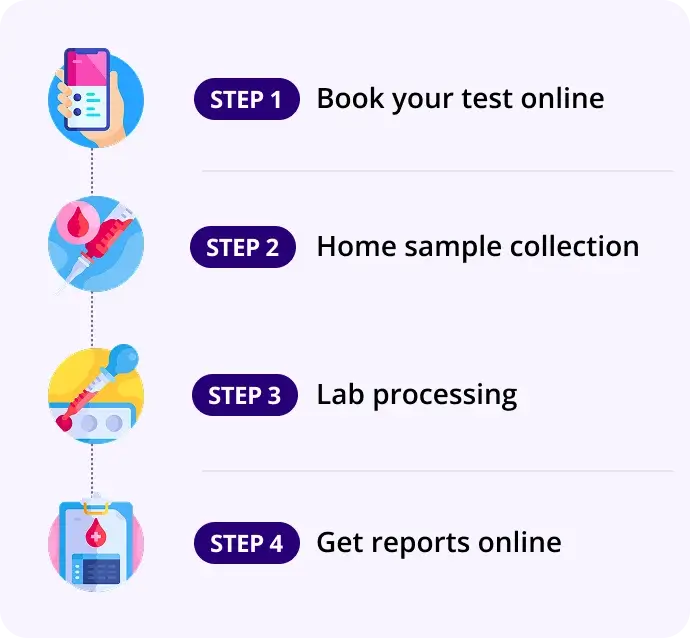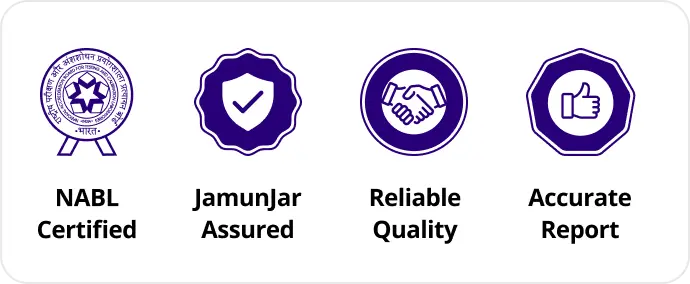Valproic acid
Report in 16Hrs
At Home
No Fasting Required
Details
Measures the concentration of valproic acid in the blood. Valproic acid is an anticonvulsant and mood-stabilizing drug
₹349₹770
55% OFF
🧪 What is the Valproic Acid Test?
The Valproic Acid (also called valproate) test measures the concentration of valproic acid in the blood. Valproic acid is an anticonvulsant and mood-stabilizing drug used primarily in the treatment of:
- Epilepsy (generalized and focal seizures)
- Bipolar disorder (manic episodes)
- Migraine prophylaxis
Therapeutic drug monitoring ensures efficacy while avoiding toxicity.
❓ Why is the Test Done?
To:
- Optimize dosing by targeting a therapeutic range
- Assess compliance in patients on valproate therapy
- Prevent toxicity, especially in patients with risk factors (hepatic impairment, polytherapy)
- Investigate treatment failure or breakthrough seizures
- Monitor in special populations (children, pregnant women, liver disease)
📊 Normal (Therapeutic) Range
Trough Valproate Level | Interpretation |
|---|---|
50 – 100 µg/mL (350–700 µmol/L) | Target range for most seizure disorders |
80 – 125 µg/mL | May be required for bipolar disorder management |
Toxicity risk increases when levels exceed 100–120 µg/mL.
📈 Interpretation of Results
Level | Clinical Significance |
|---|---|
< 50 µg/mL | Subtherapeutic—risk of breakthrough seizures or mood relapse |
50–100 µg/mL | Therapeutic for epilepsy—likely effective |
80–125 µg/mL | Therapeutic for mania |
> 100–120 µg/mL | Increased risk of adverse effects (hepatotoxicity, CNS depression) |
> 150 µg/mL | Toxic—nausea, tremor, ataxia, sedation; risk of hyperammonemia, encephalopathy |
🧠 Associated Organs & Conditions
Organ/System | Potential Effects |
|---|---|
Liver | Hepatotoxicity—monitor LFTs, risk higher in young children |
Central Nervous System | CNS depression, tremor, ataxia, sedation |
Gastrointestinal | Nausea, vomiting |
Hematologic | Thrombocytopenia, platelet dysfunction |
Metabolic | Hyperammonemia, pancreatitis |
🔄 Related / Follow-Up Tests
- Liver function tests (ALT, AST, bilirubin) — baseline and periodic
- Ammonia level — if encephalopathy suspected
- Complete blood count (CBC) — monitor platelets, blood dyscrasias
- Serum electrolytes — valproate can affect sodium levels
- Therapeutic levels of companion anticonvulsants — when used in polytherapy
✅ Fasting Required?
Test | Fasting Required |
|---|---|
Valproic Acid Level | ❌ No (draw trough sample just before next dose) |
📝 Summary Table
Parameter | Details |
|---|---|
What | Blood valproic acid concentration |
Why | Guide dosing, ensure efficacy, prevent toxicity |
Therapeutic Range | Epilepsy: 50–100 µg/mL; Mania: 80–125 µg/mL |
Subtherapeutic (<50) | Risk of breakthrough seizures or mood relapse |
Toxic (>100–120) | Hepatotoxicity, CNS depression, hyperammonemia risk |
Associated Conditions | Seizure disorders, bipolar disorder, migraine prophylaxis |
Follow-up Tests | LFTs, ammonia, CBC, electrolytes, companion drug levels |
Fasting Required | ❌ No (drawn at trough, before next dose) |
How our test process works!

